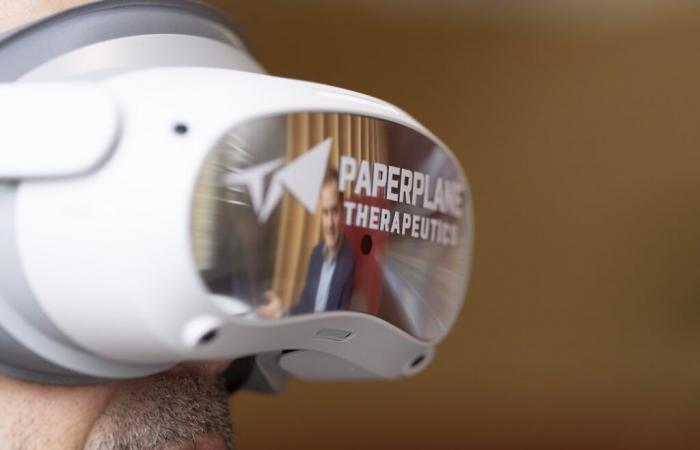MONTREAL — The use of virtual reality could help men struggling with erectile dysfunction. This is what a team of UQAM researchers hopes to demonstrate in the upcoming work of their study, which explored for the first time the potential of this technological tool in the field of men’s sexual health.
In this study led by professor in the Department of Sexology at UQAM David Lafortune, 60 Quebec adults were exposed to virtual scenarios featuring them. Concretely, they viewed pornographic content in a virtual reality headset.
For the moment, this is not a therapeutic study. The researchers first want to check whether virtual reality is a technology that can activate the symptoms of erectile dysfunction.
Erectile dysfunction is similar to erectile difficulty, but there are some nuances to be made. When a man has difficulty maintaining an erection with one or more partners for a certain period of time, whether it is a single sexual encounter or several weeks, it is called erectile difficulty. We speak of erectile dysfunction when the difficulty lasts for at least six months and causes significant distress for the person. “In terms of demonstrations, it’s the same thing,” says Mr. Lafortune. It is above all the criteria of distress and duration which are different.
In his study, Mr. Lafortune and his team at the EROSS Laboratory developed scenarios likely to activate the symptoms of erectile dysfunction. They looked at symptoms of performance anxiety, including having low sexual arousal and feeling involved in the sexual encounter.
Three scenarios were presented to participants. For the first, the person gave oral sex to a partner; in the second she was masturbated; and in the third she was involved in a penetration scenario by being the person who penetrates.
The results showed that people with erectile dysfunction tended to have less sexual arousal during viewing. “What we found, however, was that even people with an erectile disorder had a relatively low level of performance anxiety in our scenarios, relatively equivalent to those of the other group, which is a non-clinical group. », was surprised Mr. Lafortune.
In other words, for the moment, virtual reality is not capable of activating performance anxiety. “We know that people in our study who had an erectile disorder were more apprehensive about sexual scenarios where they would have to penetrate their partner […] but during the scenario they were not necessarily anxious.”
Erectile dysfunction affects between 6 and 24% of males. Ultimately, the objective of the study is to determine the relevance of virtual reality as a therapeutic tool to help these men.
“I really feel that virtual reality and also the involvement of connected sex toys would allow people who have erectile dysfunction to practice exercises at home with fictitious partners to desensitize their fears and apprehensions regarding erectile dysfunction. sexual failure,” says Mr. Lafortune.
Looking ahead, he wants people to be able to personalize their virtual partner based on their current or desired partner. Multisensory and interactive aspects would also make it possible to get closer to the realism of a real sexual relationship.
With this approach, the goal would be for the person’s avatar to be able to not have an erection as strong as desired and thus help the person to desensitize and de-dramatize the situation. “Traditional methods of therapy which are based on exposure and on sexological exercises that we do at home with the partner are effective. So, I have no reason to think that by adding virtual reality to simulate and increase the opportunities to practice, we would not have effective therapeutic effects if not more effective,” explains Professor Lafortune.
This kind of virtual reality-assisted therapy could be particularly beneficial for certain groups of people, including those who do not have a stable partner or people with certain physical disabilities.
—
The Canadian Press’ health content receives funding through a partnership with the Canadian Medical Association. The Canadian Press is solely responsible for editorial choices.






